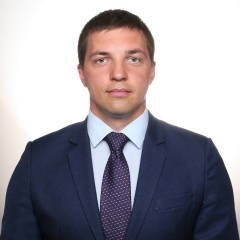????????#отпускотрио Порту Алегре, Рио Гранде до Сул????????
Однажды на пол дня в воскресенье занесло в Порту Алегре. От кого-то из наших я слышала, что город это замечательный, уровень жизни лучше и вообще на юге страны царит порядок и процветание, потому что эту часть заняли переселенцы из Германии и организованных стран Европы. Поэтому, я была в нетерпении.
Не буду строго судить мнения других людей, я уже давно поняла, что на него полагаться не стоит, так как все оценочные показатели очень субъективны. И даже синий для некоторых белый, как в истрии с тем самым платьем. .
Центр Порту Алегре в воскресенье ещё более грустный, чем центр Рио. Это не удивительно, город меньше, да и туризм там не так развит, как у нас. Но в Рио что-то организовано и для местных жителей: фуд траки, культурные центры и прочее. А в Порту Алегре очередь была только за мороженым Макдональдса.
.
В городе очень много красивых зданий начала 20 века, причём они в очень хорошем состоянии и судя по всему не пустуют в течение недели. На улицах достаточно безопасно (так, что я ходила, кое чего фоткала и не стремалась от каждого встречного, господи прости). Но есть, как и в Рио, уголки не столь привлекательные, где живут в палатках и картонных коробках заброшенные государством люди.
.
Фавелы там тоже есть. Но в центре города меня удивило заброшенное многоэтажное здание, построенные этажи которого были оккупированны местными: у кого тв-тарелка висит, а у кого тряпочка вместо окна. Всё равно сколько не живи в Бразилии, очень сложно привыкнуть к бросающейся в глаза нищете и такой колоссальное разнице в уровне жизни.
.
Местные жители, которых я встретила, совершенно точно не были чистокровными потомками европейских мигрантов. Мне показалось, что в основном это потомки индейцев, породнившихся с европейцами, или индейцы, которые отошли от своего традиционного быта несколько сотен лет назад. . Хотя, в Рио Гранде до Сул ещё есть индейские племена, сохранившие свой уклад. Но уж очень типичный трудяжный (все красивые, белые и богатые в выходные в центр горда не ездят, поэтому я их не видела) южанин отличается от типичного кариоки.
.
Есть кто из Порту Алегре? Как у вас отношения с городом?
Однажды на пол дня в воскресенье занесло в Порту Алегре. От кого-то из наших я слышала, что город это замечательный, уровень жизни лучше и вообще на юге страны царит порядок и процветание, потому что эту часть заняли переселенцы из Германии и организованных стран Европы. Поэтому, я была в нетерпении.
Не буду строго судить мнения других людей, я уже давно поняла, что на него полагаться не стоит, так как все оценочные показатели очень субъективны. И даже синий для некоторых белый, как в истрии с тем самым платьем. .
Центр Порту Алегре в воскресенье ещё более грустный, чем центр Рио. Это не удивительно, город меньше, да и туризм там не так развит, как у нас. Но в Рио что-то организовано и для местных жителей: фуд траки, культурные центры и прочее. А в Порту Алегре очередь была только за мороженым Макдональдса.
.
В городе очень много красивых зданий начала 20 века, причём они в очень хорошем состоянии и судя по всему не пустуют в течение недели. На улицах достаточно безопасно (так, что я ходила, кое чего фоткала и не стремалась от каждого встречного, господи прости). Но есть, как и в Рио, уголки не столь привлекательные, где живут в палатках и картонных коробках заброшенные государством люди.
.
Фавелы там тоже есть. Но в центре города меня удивило заброшенное многоэтажное здание, построенные этажи которого были оккупированны местными: у кого тв-тарелка висит, а у кого тряпочка вместо окна. Всё равно сколько не живи в Бразилии, очень сложно привыкнуть к бросающейся в глаза нищете и такой колоссальное разнице в уровне жизни.
.
Местные жители, которых я встретила, совершенно точно не были чистокровными потомками европейских мигрантов. Мне показалось, что в основном это потомки индейцев, породнившихся с европейцами, или индейцы, которые отошли от своего традиционного быта несколько сотен лет назад. . Хотя, в Рио Гранде до Сул ещё есть индейские племена, сохранившие свой уклад. Но уж очень типичный трудяжный (все красивые, белые и богатые в выходные в центр горда не ездят, поэтому я их не видела) южанин отличается от типичного кариоки.
.
Есть кто из Порту Алегре? Как у вас отношения с городом?
???????? # vacationotrio Porto Alegre, Rio Grande do Sul ????????
Once, half a day on Sunday, it drifted into Porto Alegre. From some of ours, I heard that the city is wonderful, the standard of living is better and in general in the south of the country order and prosperity reigns, because this part was occupied by immigrants from Germany and organized countries of Europe. Therefore, I was impatient.
I will not strictly judge the opinions of other people, I have long understood that you should not rely on it, since all estimated indicators are very subjective. And even blue for some white, as in Istria with the very dress. .
The center of Porto Alegre on Sunday is even sadder than the center of Rio. This is not surprising, the city is smaller, and tourism there is not as developed as ours. But in Rio, something is organized for the locals: food trucks, cultural centers and so on. And in Porto Alegre the turn was only for McDonald's ice cream.
.
The city has a lot of beautiful buildings of the early 20th century, and they are in very good condition and apparently not empty during the week. On the streets it is safe enough (so that I walked, some of which fotkala and did not try to from each oncoming, God forgive me). But there are, as in Rio, the corners are not so attractive, where people abandoned by the state live in tents and cardboard boxes.
.
Favela there too. But in the center of the city I was surprised by an abandoned multi-storey building, the floors of which were built were occupied by local people: who has a TV-set, and who has a cloth instead of a window. No matter how much you do not live in Brazil, it is very difficult to get used to the conspicuous poverty and such a colossal difference in the standard of living.
.
The locals I met were most definitely not purebred descendants of European migrants. It seemed to me that they were mostly descendants of Indians, intermarried with Europeans, or Indians who moved away from their traditional life several hundred years ago. . Although, in the Rio Grande do Sul there are still Indian tribes that have preserved their way of life. But a very typical hard worker (all beautiful, white and rich do not go to the center at the center, so I didn’t see them) southerner is different from typical carioca.
.
Is there anyone from Porto Alegre? How is your relationship with the city?
Once, half a day on Sunday, it drifted into Porto Alegre. From some of ours, I heard that the city is wonderful, the standard of living is better and in general in the south of the country order and prosperity reigns, because this part was occupied by immigrants from Germany and organized countries of Europe. Therefore, I was impatient.
I will not strictly judge the opinions of other people, I have long understood that you should not rely on it, since all estimated indicators are very subjective. And even blue for some white, as in Istria with the very dress. .
The center of Porto Alegre on Sunday is even sadder than the center of Rio. This is not surprising, the city is smaller, and tourism there is not as developed as ours. But in Rio, something is organized for the locals: food trucks, cultural centers and so on. And in Porto Alegre the turn was only for McDonald's ice cream.
.
The city has a lot of beautiful buildings of the early 20th century, and they are in very good condition and apparently not empty during the week. On the streets it is safe enough (so that I walked, some of which fotkala and did not try to from each oncoming, God forgive me). But there are, as in Rio, the corners are not so attractive, where people abandoned by the state live in tents and cardboard boxes.
.
Favela there too. But in the center of the city I was surprised by an abandoned multi-storey building, the floors of which were built were occupied by local people: who has a TV-set, and who has a cloth instead of a window. No matter how much you do not live in Brazil, it is very difficult to get used to the conspicuous poverty and such a colossal difference in the standard of living.
.
The locals I met were most definitely not purebred descendants of European migrants. It seemed to me that they were mostly descendants of Indians, intermarried with Europeans, or Indians who moved away from their traditional life several hundred years ago. . Although, in the Rio Grande do Sul there are still Indian tribes that have preserved their way of life. But a very typical hard worker (all beautiful, white and rich do not go to the center at the center, so I didn’t see them) southerner is different from typical carioca.
.
Is there anyone from Porto Alegre? How is your relationship with the city?
У записи 10 лайков,
0 репостов,
310 просмотров.
0 репостов,
310 просмотров.
Эту запись оставил(а) на своей стене Алена Целикова






























